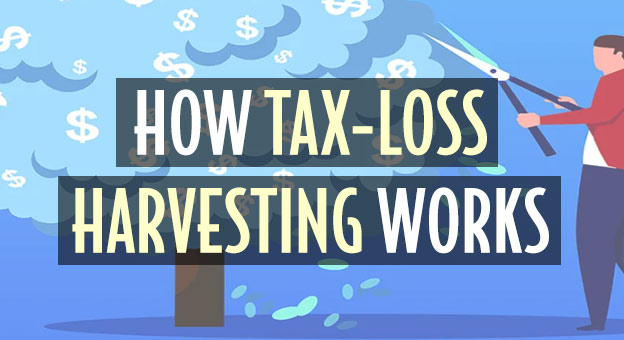It’s inevitable that you’ll lose money on some investments and make a profit on others.
But there is a bright side to those losing investments – they might help you lower your
tax bill through a process called tax-loss harvesting.
Here’s what you should know about tax-loss harvesting.
How Tax-Loss Harvesting Works:
It usually works like this: You sell an investment that’s worth less than what you bought it for. You also sell an investment that’s worth more than what you bought it for.
The loss on one helps offset the gains on the other. And then you take the proceeds from both sales to reinvest in securities that fit both your asset allocation and time horizon. A lot of people are finding that tax-loss harvesting makes a lot of sense when looking at capital gains and losses from crypto.
Here’s an example of tax-loss harvesting from Charles Schwab.
Example of Tax Loss Harvesting:
You’re looking at your portfolio and you see that the tech stocks you own have gained in value while your health care stocks have dropped. Now your portfolio’s overweighted to tech stocks. So you sell some of those tech stocks, realizing a taxable gain.
You also sell some of your health care stocks, realizing a loss. You take the proceeds from both sales and reinvest those funds in a way that rebalances your portfolio and aligns with your goals.
When it’s time to do your taxes, the loss on those health care stocks could offset the gain on those tech stocks, and you won’t owe any capital gains taxes.
In addition, the IRS allows you to use up to $3,000 of the remaining capital loss to lower your ordinary taxable income each year.
In this example, the final $2,000 is carried forward and could be used to offset income in future tax years. Assuming a 35% marginal tax rate, your overall tax benefit could be as much as $8, 050.
Tip: Even if you don’t have any capital gains to offset, any investment losses in the current tax year could still reduce your taxable income by up to $3,000.
*Related: Is TurboTax Really Free?
Tax Loss Harvesting Rules:

There are some important rules to keep in mind with tax-loss harvesting:
- You can only do tax-loss harvesting in your taxable brokerage accounts and not in 401(k)s or IRAs.
- You have to use short-term losses to offset short-term gains and long-term losses to offset long-term gains
- If you have excess losses in either category, they can be applied to either type of gain.
- if you sell a security at a loss and buy the same or a “substantially identical” security within 30 days before or after the sale, you can’t have it count against gains.
So make sure when you’re tax-loss harvesting that you’re reinvesting in different securities than the ones you’re using to book a loss.
Consult your tax or financial planning professional to see how tax-loss harvesting could fit into your financial picture.
Filing your taxes with TurboTax? We have an exclusive coupon here!
Thanks for visiting Mighty Taxes!

